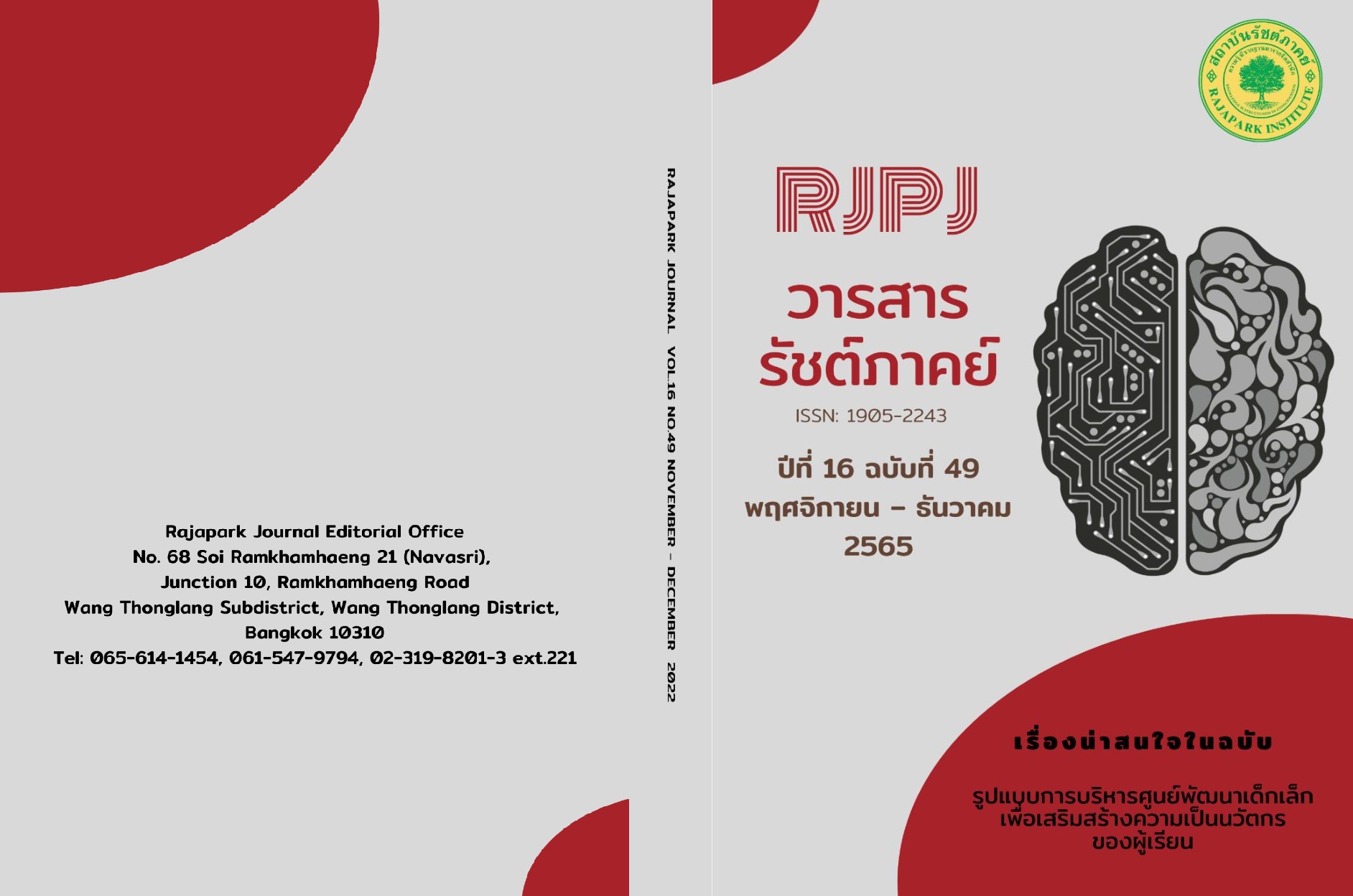The Development of the Capability of Agricultural Processed Products for Value-Added of Community Enterprises in Pa Sang District, Lamphun Province
Main Article Content
Abstract
The objectives of the research were to study the situation of the agricultural processing product enterprise group in Pa Sang district, Lamphun province, and develop products and add value to processed agricultural products to make them a premium product of the community enterprise group in Pa Sang district, Lamphun province. This study used participatory action research (PAR) and mixed methods (experimental design: instrument development model) as a research design. The study had a mixed-methods research design that used both qualitative and quantitative research. The qualitative research consisted of a sample group of community enterprises. The researcher used an in-depth interview to develop agricultural processed products together and a focus group to analyze agricultural processed products before starting to sell products. Quantitative research data were collected from consumers who buy processed agricultural products. The findings demonstrate that the situation of the community enterprise group can be analyzed using segmentation, targeting, and positioning (STP) and environment analysis (SWOT). It can also be applied to increase product value. processed agricultural products of community enterprises, Pa Sang District, Lamphun Province. After adding value to the product, customer satisfaction is higher than ever, with a statistical significance level of 0.01.
Article Details

This work is licensed under a Creative Commons Attribution-NonCommercial-NoDerivatives 4.0 International License.
Views and opinions appearing in the Journal it is the responsibility of the author of the article, and does not constitute the view and responsibility of the editorial team.
References
Ampansirirat, A., & Wongchaiya, P. (2017). The Participatory Action Research: Key Features and Application in Community. Journal of Humanities and Social Sciences Mahasarakham University, 36(6), 192–202.
Cheawjindakarn, B. (2018). Qualitative Case Study Research Techniques. Liberal Arts Review, 13(25), 103–118.
Creswell, J.W., & Clark, V.P. (2007). Designing and Conducting Mixed Methods Research. Sage Publication.
Creswell, J.W. (2015). A Concise Introduction to Mixed Methods Research. Sage Publication.
Cochran, W.G. (1953). Sampling Techniques. John Wiley & Sons.
Cucagna, M.E., & Goldsmith, P.D. (2017). Value Adding in the Agri-food Value Chain. International Food and Agribusiness Management Review, 21(3), 293–316.
Festila, A., & Chrysochou, P. (2018). Implicit Communication of Food Product Healthfulness Through Package Design: A Content Analysis. Journal of Consumer Behaviour, 17(1), 461-476.
Fuentes, C., & Fuentes, M. (2017). Making a Market for Alternatives: Marketing Devices and the Qualification of a Vegan Milk Substitute. Journal of Marketing Management, 33(1), 1-27.
Gregoric, M., Haleuš, J., Zeman, S., & Vovk, A. (2018). The Importance of Branding of Agricultural Products with Quality Labels and their Recognition in Croatian Market. In Conference: 7th International Scientific Symposium: Economy of eastern Croatia–Vision and Growth, Osijek, Hrvatska.
Kaewkhankrai, T. (2017). Survive The Economic Crisis by Implementing Community Enterprise. Academic Journal of Buriram Rajabhat University, 9(2), 33-50.
Kasikorn Research Center. (2017). Urban Lifestyle and Strong Health Trends Pushing Agricultural Processing to Grow. Kasikorn Research Center.
Office of the National Economics and Social Development Council. (2006). Sustainable Development Goals: (SDGs). Office of the National Economics and Social Development Council.
Office of the Permanent Secretary for Ministry of Agriculture and Cooperatives Pong Municipality. (2017). Thai farmers 4.0. Journal of Agriculture Office of the Permanent Secretary, Pong Subdistrict, 18(1), 1-2.
Pharadonphiban, K., Tammapanya, N., & Tayatong, S. (2019). Packaging Development of Herbal Tea Product. RMUTL Journal Socially of Engaged Scholarship, 3(1), 63-74.
Poungprayong, K., & Chantaranamchoo N. (2017). The Development Approach of Small and Micro Community EnterpriseProcessing and Product Group Samutsongkram Province. Silpakorn Educational Research Journal, 5(1), 108–120.
Sharma, N., & Sajeev, V. (2018). Active White Space (AWS) in Logo Designs: Effects on Logo Evaluations and Brand Communication. Journal of Advertising, 47(3), 270-281.
Song, C. M., & Jeon, H. Y. (2017). A semiotic study of regional branding reflected in the slogans of Korean regions. Social Semiotics, 28(2), 1-27.
Tahom, U., Dhurata, S., Bungtong, C., & Wongsa, K. (2018). The Model for Maximizing the Local Food Product Value of “Tampiangsongkruang” (Bamboo Shoot Mixed with Extra-ingredients) to Strengthen Ban Samet Community Economy of Nongtreng Sub-District, Krasang District, Buriram Province. Journal of Social Development, 20(2), 35-60.
Tankosić, V. J., Svetlana, I., Jelena, K., Jovana, M., & Irena, M. (2020). Analysis of Consumers Willingness to Pay for Organic and Local Honey in Serbia. Sustainability, 12(11), 46-86.
Weinstein, A. (2020). Creating Superior Customer Value in the Now Economy. Journal of Creating Value, 6(5), 1-14.
Xu, X. B., Chen, R., & Liu, M. (2017). The Effects of Uppercase and Lowercase Wordmarks on Brand Perceptions. Marketing Letters, 28, 449-460.


